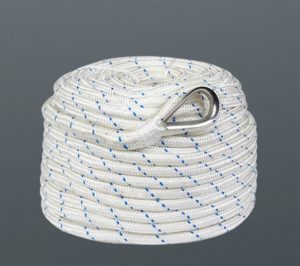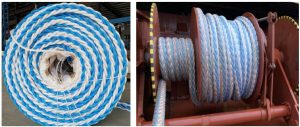Shanghai Gengyun Industrial Co., Ltd
Polypropylene Rope vs Nylon Rope, What is the difference? How to Choose?
Polypropylene Rope vs Nylon Rope, How to Choose? Polyamide, commonly known as nylon, is a general term for thermoplastic resins containing repeating amide groups — [NHCO] — on the main chain of the molecule.
Early nylon ropes were better than ropes made of natural fibers. But they were very hard, causing great friction, and were extremely inconvenient to use due to their high elasticity. Braided nylon rope were gradually replaced by woven nylon ropes. Modern braided nylon ropes divided into core and sheath. The core in the middle is nylon filaments that are parallel or braided, which provides most of the tensile resistance and buffering effect. The outer layer covered with a smooth braided nylon sheath. Which mainly protects the core. Braided nylon rope retain the characteristics of nylon ropes and eliminate the shortcomings of braided nylon ropes — roughness, excessive friction, and high elasticity.
Features of Nylon Ropes
Nylon braided ropes have good wear resistance, rather than being easily damaged like products made of petroleum or most chemicals.
Nylon braided ropes have good resistance to UV sunlight deterioration and called “UV stable”.
Polypropylene Cable Rope
The main raw material of polypropylene rope is polypropylene. Which is an olefin plastic with excellent physical and mechanical properties and relatively low price.
Production of Polypropylene Cable Rope
The production process mainly includes the steps of raw material selection, melt spinning, drawing, stretching and winding. The polypropylene material is put into the melt spinning machine for heating and melting. And then the machine melts the polypropylene material and extrude it into filaments. Under the action of the drawing machine, the filaments undergo a series of stretching, cooling and other process processes and gradually become filaments. In order to ensure the strength and durability of the cable, the stretching process of the filament needs to be strictly controlled. After several stretching processes (the stretching multiple is generally 3~5 times), the stretched filaments are wound on the machine. And after a series of adjustments and corrections, various specifications of polypropylene rope are finally made.
Features of Polypropylene Cable Rope
Polypropylene rope have great load resistance and high strength. It is very flexible with minimal stretching. And it has good abrasion and chemical resistance. This can resist corrosion from a variety of chemicals and extend its service life.
Polypropylene cable rope are lightweight and buoyant, making them ideal for use in water sports or pool marking.
Polypropylene Rope vs Nylon Rope, How to choose based on different applications?
Underwater
The wear resistance and UV resistance of nylon cable rope make it an ideal choice for underwater fiber optic cables. It can resist the erosion of water flow and the bite of marine organisms, protecting the safety of fiber optic cables.
Outdoor
What is nylon rope used for? In outdoor environments, nylon cable ropes can resist wind and rain erosion and UV exposure and maintain stable performance.
Pipeline
When laying fiber optic cables in pipelines, nylon cable rope can be used as towing ropes or fixing ropes to ensure the position and stability of fiber optic cables in pipelines.
Aerial
The light weight and corrosion resistance of polypropylene cable make it an ideal choice for aerial fiber optic cables. It can withstand a certain amount of tension while resisting wind, rain and UV exposure.
Indoor
What is polypropylene rope used for ? In indoor environments, polypropylene cable can be used to fix or pull fiber optic cables to ensure their position and stability indoors. Due to its low price, it often used in large-scale fiber optic cable laying projects.
Summary
Polypropylene Rope vs Nylon Rope have their own characteristics in the application scenarios of fiber optic cables. If you don’t know how to choose, please feel free to contact us.


